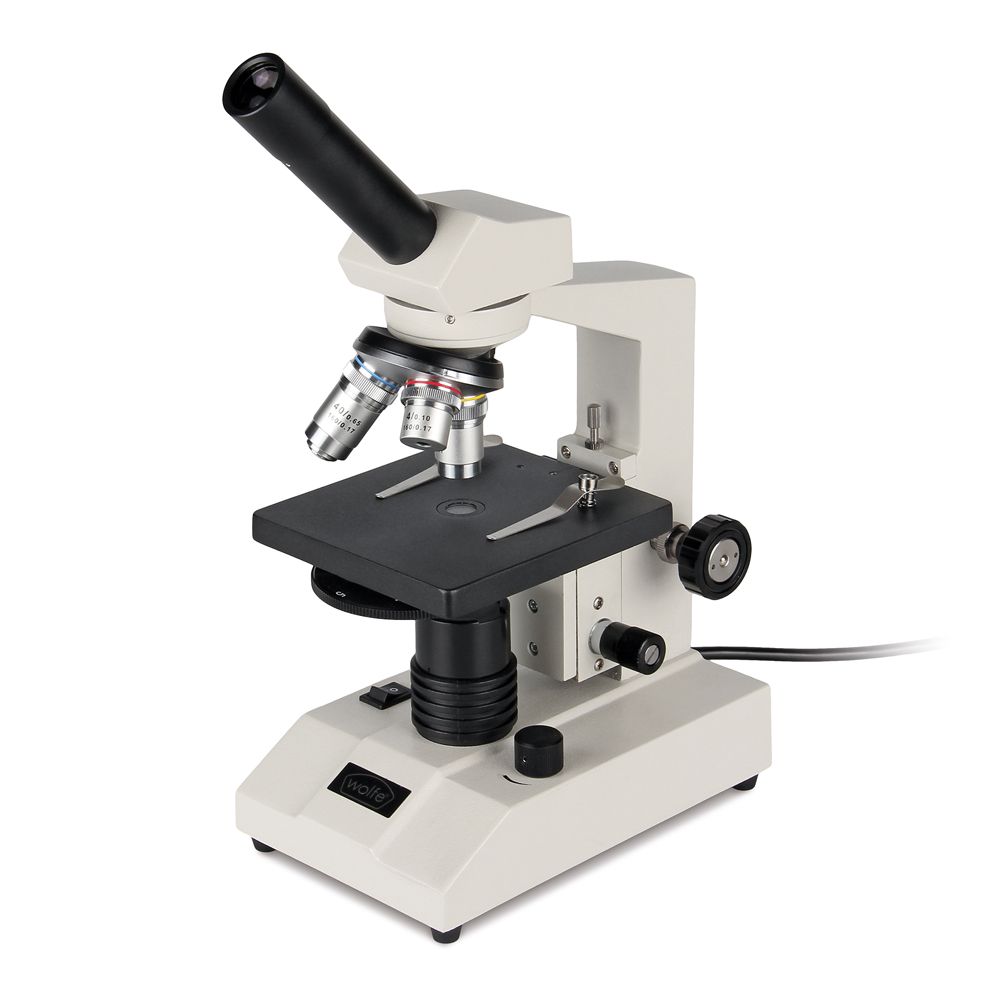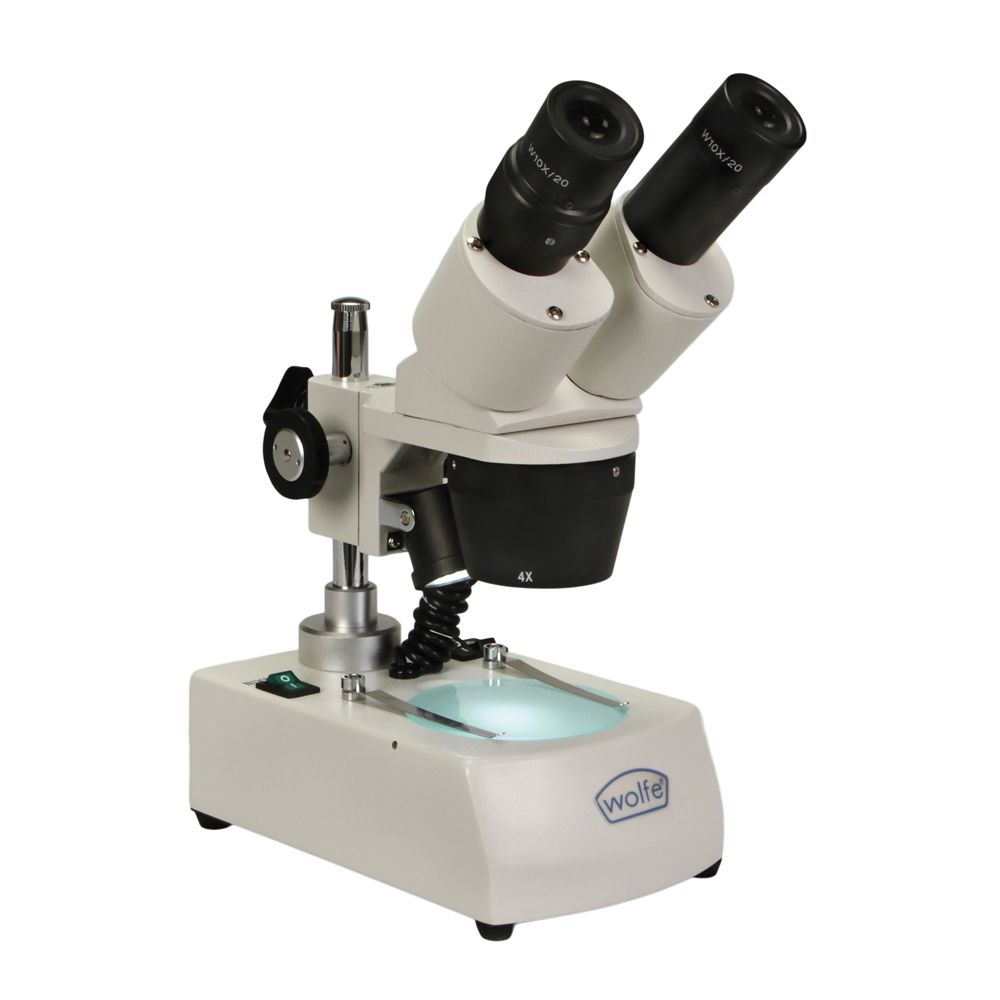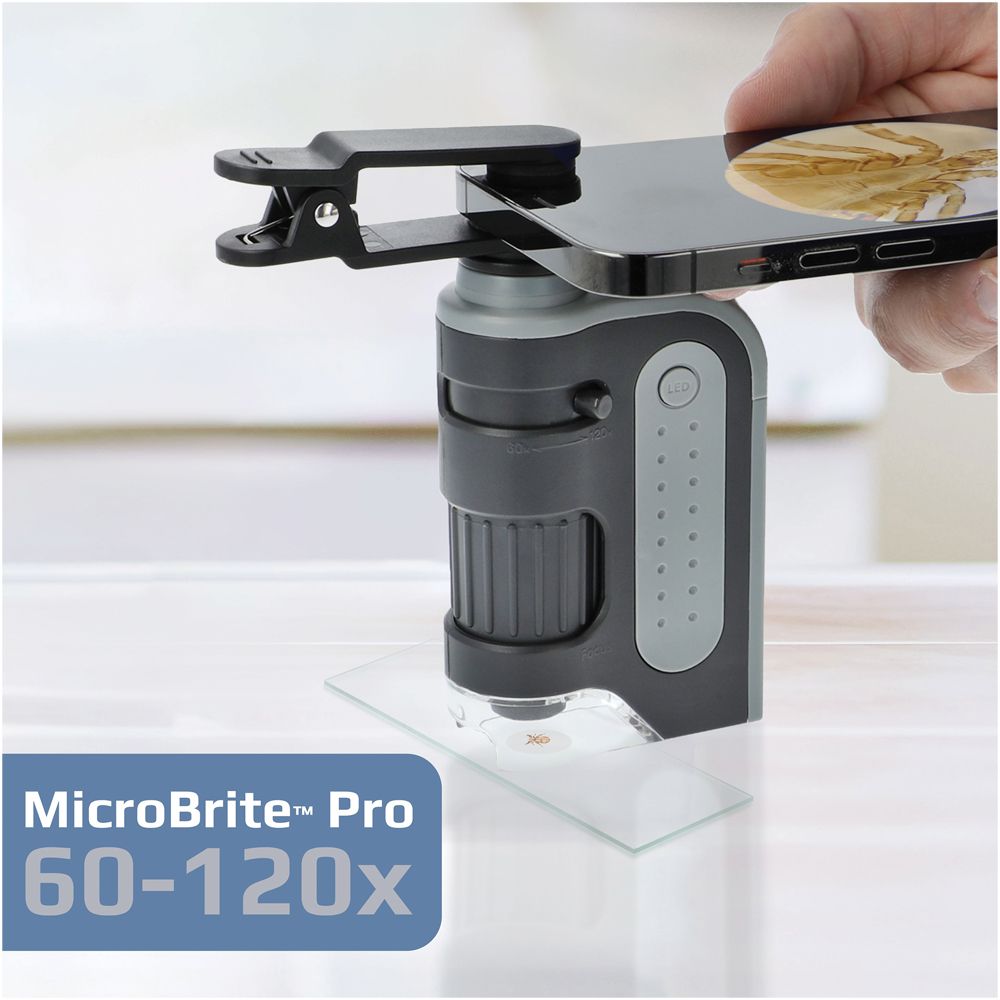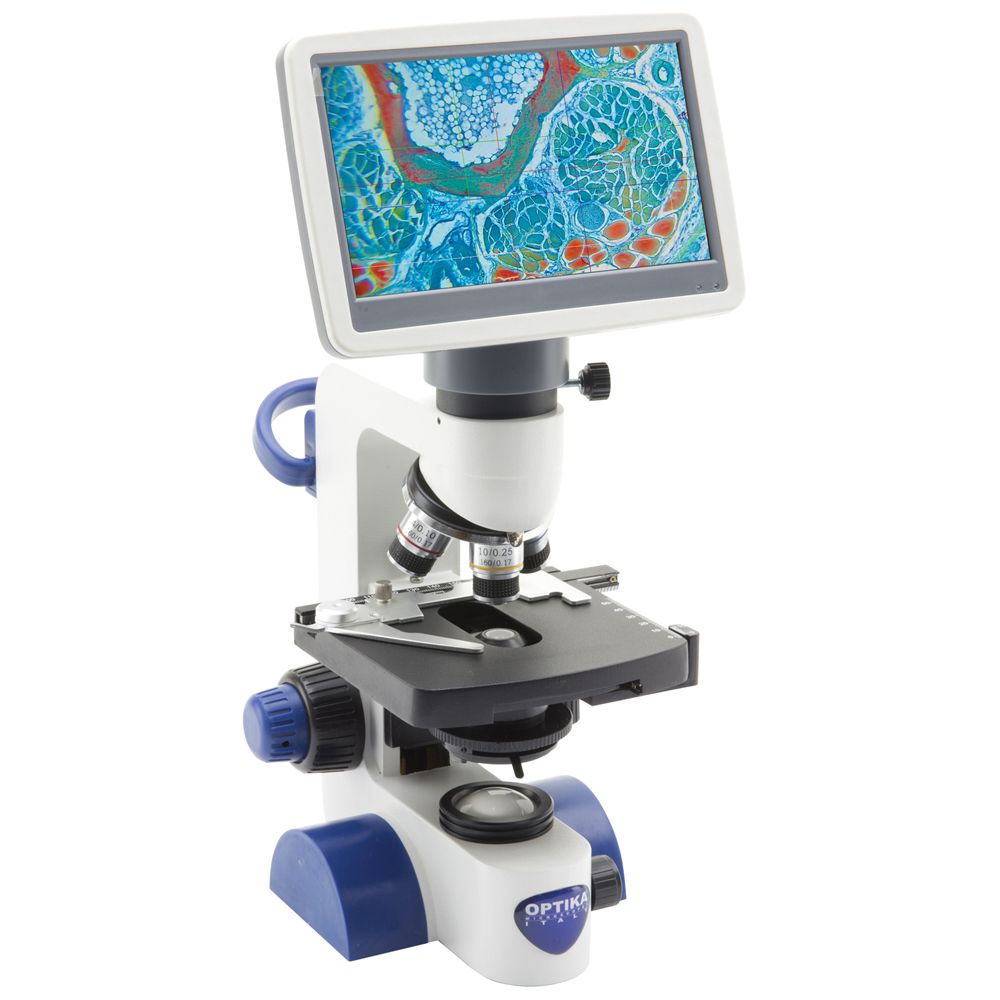Are you planning to purchase some new microscopes to replace old ones or to meet the needs of increased enrollment? If you’re a first-time buyer, the task can seem daunting. This brief guide explains the basics of microscopes and their applications, helping you choose the right models for your classroom or laboratory.
The basic types of microscopes are compound microscopes and stereomicroscopes.

Compound microscopes are the type that most people think of when they hear the word “microscope.” Compound microscopes typically provide high-power magnification with a narrow field of view. They are used to view micro-sized specimens that are thin enough to allow light to pass through them. These include microorganisms, tissue samples, cells, and the like. Specimens must be mounted on a glass or plastic slide prior to viewing.
Slides to be viewed are placed on the microscope’s stage and illuminated by light from below the stage. Magnification usually ranges from 40× to 1,000×, and is accomplished by the combination of the microscope’s eyepiece lens and one of its objective lenses located in the rotating nosepiece. The magnification powers of both lenses are multiplied together to determine the total magnification. For example, a 10× eyepiece and a 40× objective yield a total magnification of 400×.
Compound microscopes are available with monocular (one eyepiece), binocular (2 eyepiece), and trinocular (3 eyepiece) heads. Monocular compound microscopes are sufficient for most beginning student (upper elementary through high school) work. Binocular compound microscopes should be used for more advanced work, i.e., advanced high school and up, because they reduce eyestrain during long viewing sessions. Compound microscopes are also available with trinocular heads, which enable binocular viewing with a separate eyepiece for cameras or other media devices.
A graduated mechanical stage is an essential accessory for compound microscopes used in high school and college classes. It allows the student to position the slide precisely in the field of view. This makes it possible to perform measurements and to examine the entire specimen in detail.

Innovative design and economical pricing make this microscope perfect for the unique needs of the elementary classroom.

Well-designed, versatile, and durable microscopes with features you need, including inclined, rotatable head, in-base LED illuminator, and disc or adjustable iris diaphragm. Separate coarse and fine adjustments give faster, more accurate focusing at higher magnifications.

Professionally equipped instruments priced within the educational budget.
Stereomicroscopes, sometimes referred to as dissecting microscopes, provide low-power magnification with a wide field of view. They are used to observe macro-sized specimens, such as rocks, fossils, macroorganisms, circuit boards, and the like. Stereomicroscopes usually have a binocular head.
Specimens viewed with a stereomicroscope can be illuminated by light below the stage, above the stage, or both. The specimen need not be thin enough for light to pass through it from below. Specimens viewed through stereomicroscopes usually are not mounted on slides.
Specimens viewed through a stereomicroscope have a 3-D appearance. Total magnification usually ranges from 10× to 40×. As with the compound microscope, magnification is accomplished by the combination of the eyepiece lens and the objective lens in the nosepiece.

These instruments offer all the advantages of a true stereomicroscope at an affordable price.

These full-featured stereomicroscopes offer exceptional value.

Professionally equipped instruments priced within the educational budget.
We offer a variety of portable field microscopes for on-site observation. These rugged, lightweight microscopes are compact and perfect for field study. Choose from traditional or digital models.

This powerful scope (20x to 60x magnification; 3x optical zoom) features an aspheric lens system, which increases magnification and image clarity while reducing distortion. The built-in LED and compact size make it both functional and portable.

Easily observe every detail with the Explorer’s 3.5" movable stage. Designed for simplicity and durability, this microscope also features a 5x wide-field eyepiece and a 4x DIN objective; sliding optical tube and locked-on, spring-loaded stage clips; and an adjustable arm that tilts up to 45°.

This lightweight, compact pocket microscope features 20–60x magnification; 3x optical zoom; and a built-in LED bulb that offers an interactive experience allowing students to make observations firsthand. It’s the perfect scope for those on the go.

Powerful, portable, and versatile, this microscope features magnification capabilities ranging from 45x to 275x, a built-in micrometer ruler, and the potential to zoom in up to 1,350x or more. Add it to a tablet or phone for lab-grade microscopic observation.
Digital microscopes are essential for student labs because they allow observation and analysis of microscopic samples, as well as the ability to capture and share magnified images. Elevate your students’ learning experience with these microscopes.

This scope features 40x magnification to 1,600x with digital zoom—ideal for viewing a wide range of cellular specimens on slides. The full-color 3-1/2" TFT LCD screen rotates 180°, making images easily sharable. The built-in, 5-megapixel digital camera captures high-resolution images and 30 fps SD video, which can be displayed via a television or projector by using the TV output.

Use this as a digital or a classical microscope. It’s bundled with a digital camera and 7" LCD screen, both in high definition. Simply replace the monocular head with the digital system to give several students the ability to view specimens at the same time.

Designed to meet the needs of the classroom, industrial applications, and hobbyists, the SFX-85V allows you to capture high-quality images and videos seamlessly. It features a 5-MP, built-in camera and tilting/folding 9" monitor with integrated software.

This all-in-one complete digital imaging system features an 8" full color tablet with microscopy camera, all-glass optics, and bright 5-way LED illumination. Capture images as stills or video clips in the internal memory or on a micro SD card.
Carolina is teamed with teachers and continually provides valuable resources–articles, activities, and how-to videos–to help teachers in their classroom.
Get the latest news, free activities, teacher tips, product info, and more delivered to your inbox.